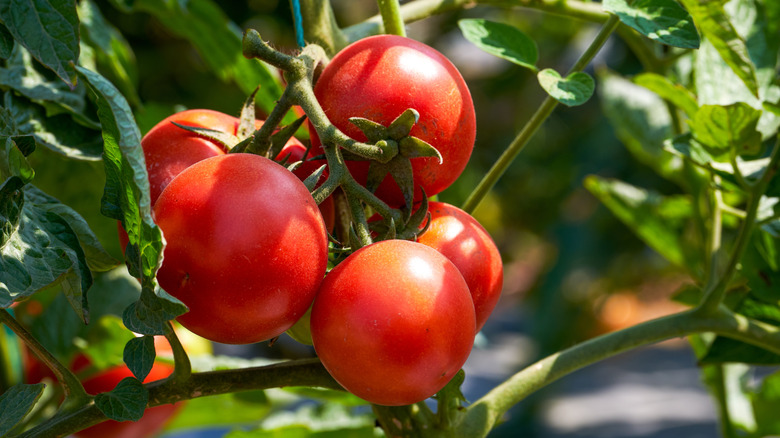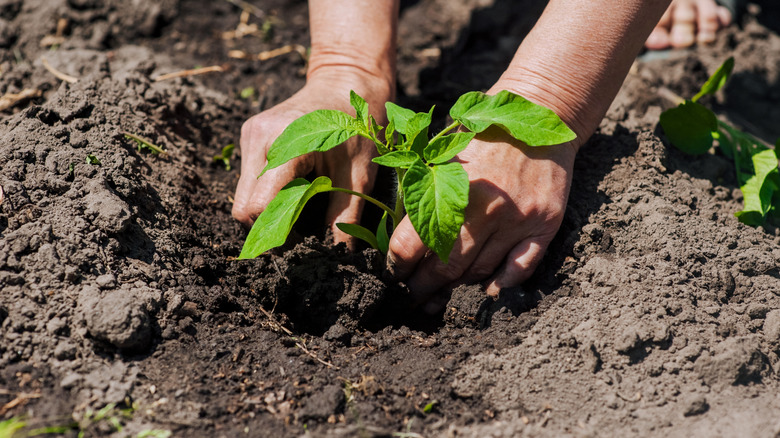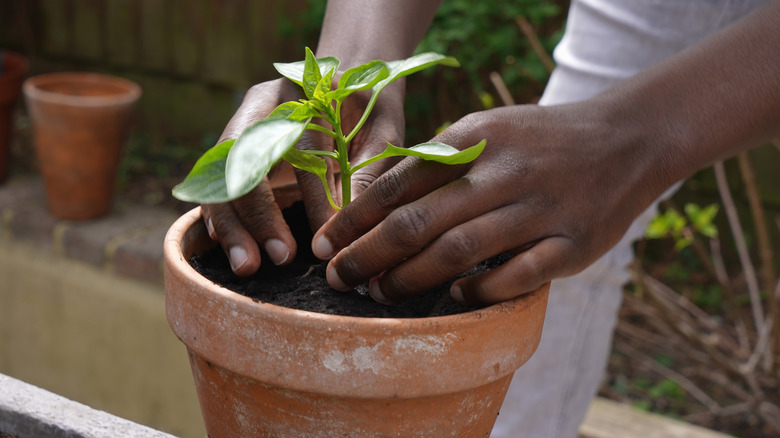Is It Better To Plant Tomatoes In The Ground Or In Containers? Pros And Cons To Consider
Tomatoes (Solanum lycopersicum) are certainly one of the more popular plants for gardeners, and with all of the tips and hacks available to help you grow tomatoes successfully, there is one important decision you need to make first. Should you grow them in containers or directly in the ground? Luckily, tomatoes can thrive in either setting, but each method has its own advantages and disadvantages. It really comes down to the specific variety you wish to plant, local conditions, and how much space you have. Tomatoes grown in the ground can develop bigger root systems, which help produce larger harvests. Container-grown tomatoes offer more flexibility for those with limited space.
In general, larger tomatoes, like beefsteak and heirloom, perform much better when planted directly into the ground where their roots can grow freely. Smaller varieties, like cherry tomatoes, handle containers just fine. Soil quality plays an important role in both methods as well. In-ground tomatoes require fertilized, loose soil that drains well but retains enough moisture to keep the plant evenly hydrated. Container gardening allows more control over the soil mix, enabling you to create the perfect environment, but pots will dry out much faster. Flexibility also matters, as you can freely move around container plants if the weather gets out of hand, while an in-ground plant may become stressed by excessive heat, wind, or rain.
Pros and cons of planting tomatoes in the ground
Planting tomatoes directly into the soil allows them to develop into strong, productive plants that yield plenty of fruit throughout the season. Their roots are free to extend several feet deep and wide, accessing moisture and nutrients wherever available. The bigger root system makes in-ground tomatoes better at handling droughts once established, requiring less frequent waterings than a container plant would. Unlike potting mixes, healthy garden soil also contains beneficial microorganisms that help plants access nutrients and resist diseases.
There are some downsides to consider when planting tomatoes directly in the ground. Poor native soil may need quite a bit of preparation to get ready for planting. If your area has heavy clay soil or poor drainage, that will require even more work. Rotating crops each year is needed as well, since a previous season's diseases can quickly resurface and infect new tomato plants. Weeds will constantly compete for nutrients and water inside garden beds, requiring regular maintenance. Pests also have better access to your tomato plants. Most importantly, there is no flexibility with location. Once planted, your tomatoes will be locked in with no easy way to move them around for more sunlight or protection from the weather. On a positive note, you can find plenty of prevention tips for common diseases and problems with in-ground tomatoes if that's the best option for you.
Pros and cons of growing tomatoes in pots
Growing tomatoes in containers can help solve a few common gardening problems. It offers the ability to completely control the environment and start every season with fresh soil. Container gardening is perfect for renters and homeowners with limited space since potted plants can be placed on patios, balconies, decks, or even rooftops. The mobility of the containers lets you chase the sunlight throughout a growing season and shelter plants if the weather turns. The plants are more accessible, making maintenance much easier.
Of course, there are limitations that require careful management. The restricted space often limits root growth, which in turn lowers plant size and yield. The soil in pots dries out much faster than an in-ground plant and will require more watering, especially in the heat. If you're using a larger container, it can quickly become too cumbersome to move, negating the flexibility of container gardens. Cheaper, low-quality plastic pots can crack and degrade over time due to the light from the sun. Luckily, there are types of tomatoes that just work better in a container, so sticking with those varieties will help offset some of the limitations. In the end, the choice between in-ground or container comes down to your space and the amount of effort you're willing to put into your tomato plants.


